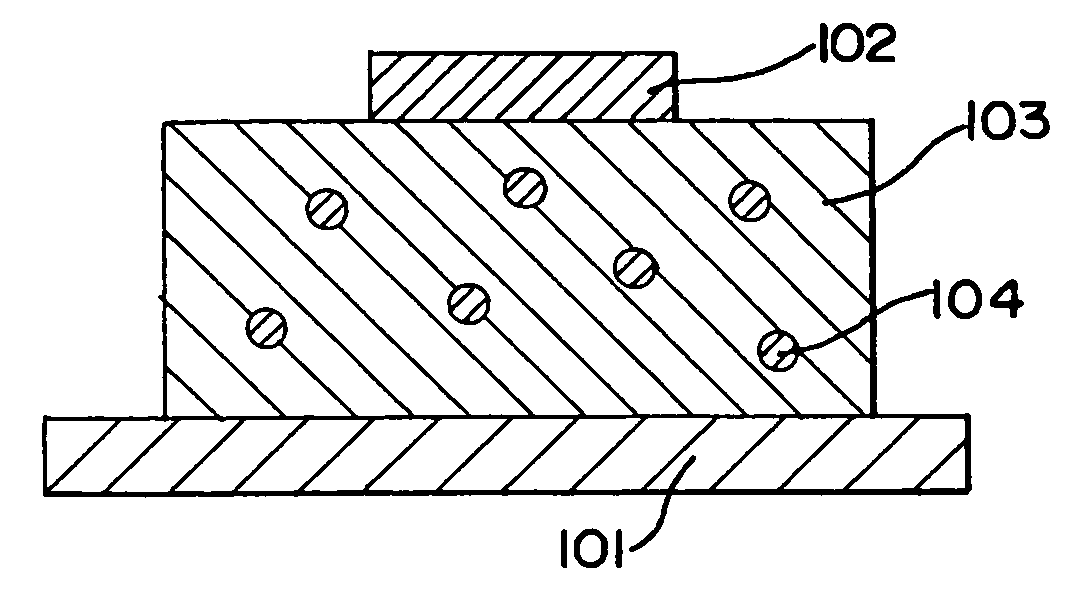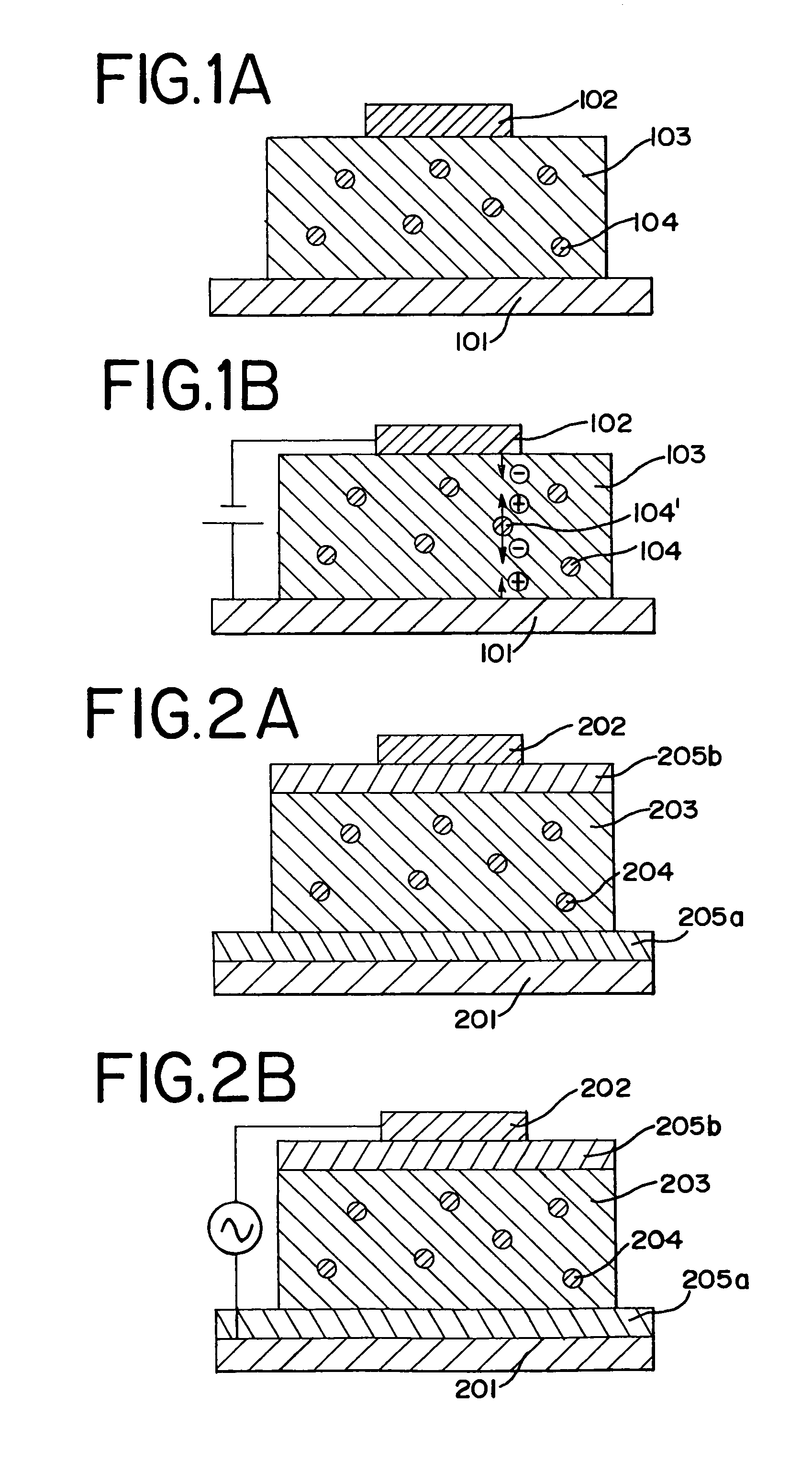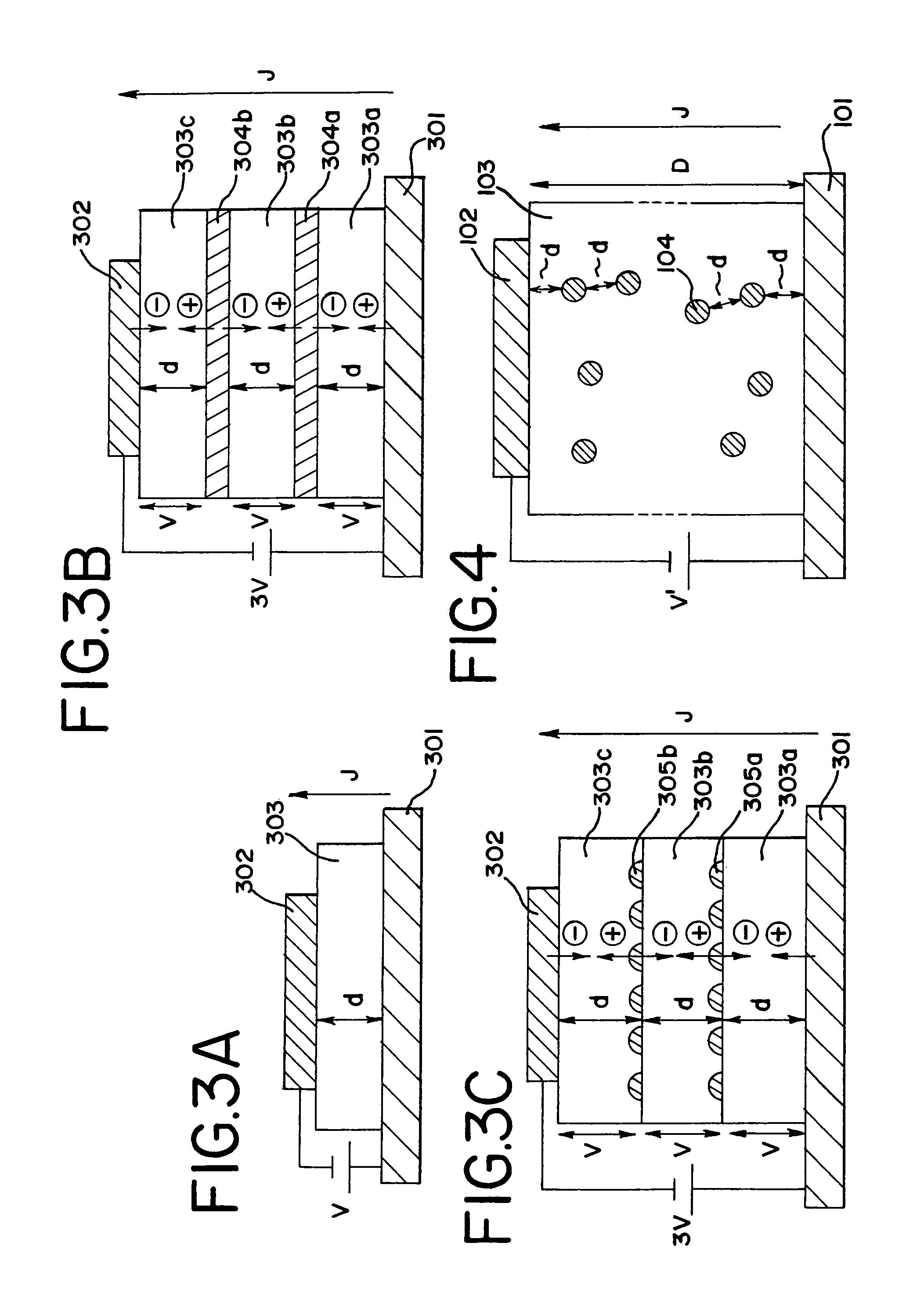Organic electroluminescent device
a technology of electroluminescent devices and organic el, which is applied in the direction of luminescnet screens, discharge tubes, applications, etc., can solve the problems of difficult even to bring the internal quantum efficiency close to 1 and the current efficiency of the organic el device is not good, and achieves high current efficiency, good yield, and high reliability
- Summary
- Abstract
- Description
- Claims
- Application Information
AI Technical Summary
Benefits of technology
Problems solved by technology
Method used
Image
Examples
embodiment 1
[Embodiment 1]
[0080]An organic EL device shown in FIGS. 1A and 1B that is fabricated by wet coating will be specifically described in this embodiment. First, aqueous solution of poly(ethylene dioxythiophene) / polystyrene sulfonic acid (abbrev., PEDOT / PSS) is coated by spin-coating to form a hole injection layer to have a thickness of 50 nm on a glass substrate on which ITO is formed to have a thickness of 100 nm as a first electrode.
[0081]Second, poly(2-methoxy-5-(2-ethyl-hexoxy)-1,4-phenylenevinylene) (abbrev., MEH-PPV) and gold nanoparticles having mean diameter 5 nm stabilized by alkane thiol are mixed in toluene solution. The solution is dispersed enough by using ultrasonic waves and coated 300 nm in thick by spin-coating on the above-mentioned hole injection layer to form an electroluminescent layer.
[0082]Lastly, Al: Li alloy is deposited to have a thickness of 100 nm as a second electrode. Then, an organic EL device can be formed. The organic EL device emits light by direct cur...
embodiment 2
[Embodiment 2]
[0083]An organic EL device shown in FIGS. 2A and 2B will be specifically described in this embodiment. First, poly(vinyl phenol) is coated by spin-coating to have a thickness of 200 nm as an insulating layer on the glass substrate on which ITO is formed to have approximately 100 nm in thick as a first electrode. In addition, a material for solvent is isopropanol.
[0084]Then, toluene solution is prepared from 50 wt % polycarbonate as binder, 29 wt % TPD as a hole transporting material, 20 wt % 2,5-bis(1-naphthyl)-1,3,4-oxadiazole (abbrev., BND) as an electron transporting material, 1.0 wt % coumarin 6 as a luminous pigment. The toluene solution is mixed with toluene solution containing gold nanoparticles having mean diameter 5 nm stabilized by alkane thiol. Then, the solution is spin coated on the above-mentioned insulating layer to form an electroluminescent layer to have 300 nm in thick.
[0085]Further, poly(vinyl phenol) is deposited by spin-coating to have a thickness ...
embodiment 3
[Embodiment 3]
[0086]An organic EL device of the present invention fabricated by bonding and coating with polymer composite films containing luminous pigments and gold nanoparticles without using vapor deposition will be specifically described in this embodiment.
[0087]First, poly(vinyl phenol) is coated by spin-coating to have a thickness of 200 nm as an insulating layer on the plastic substrate (polyester substrate or polyimide substrate) on which ITO is formed 100 nm in thick as a first electrode. In addition, a material for solvent is isopropanol.
[0088]Then, toluene solution is prepared from 50 wt % polycarbonate as binder, 29 wt % TPD as a hole transporting material, 20 wt % 2,5-bis(1-naphthyl)-1,3,4-oxadiazole (abbrev., BND) as an electron transporting material, 1.0 wt % coumarin 6 as a luminous pigment. The toluene solution is mixed with toluene solution containing gold nanoparticles having mean diameter 5 nm stabilized by alkane thiol. Then, the solution is spin coated on the ...
PUM
| Property | Measurement | Unit |
|---|---|---|
| conductivity | aaaaa | aaaaa |
| diameter | aaaaa | aaaaa |
| thickness | aaaaa | aaaaa |
Abstract
Description
Claims
Application Information
 Login to View More
Login to View More - R&D
- Intellectual Property
- Life Sciences
- Materials
- Tech Scout
- Unparalleled Data Quality
- Higher Quality Content
- 60% Fewer Hallucinations
Browse by: Latest US Patents, China's latest patents, Technical Efficacy Thesaurus, Application Domain, Technology Topic, Popular Technical Reports.
© 2025 PatSnap. All rights reserved.Legal|Privacy policy|Modern Slavery Act Transparency Statement|Sitemap|About US| Contact US: help@patsnap.com



